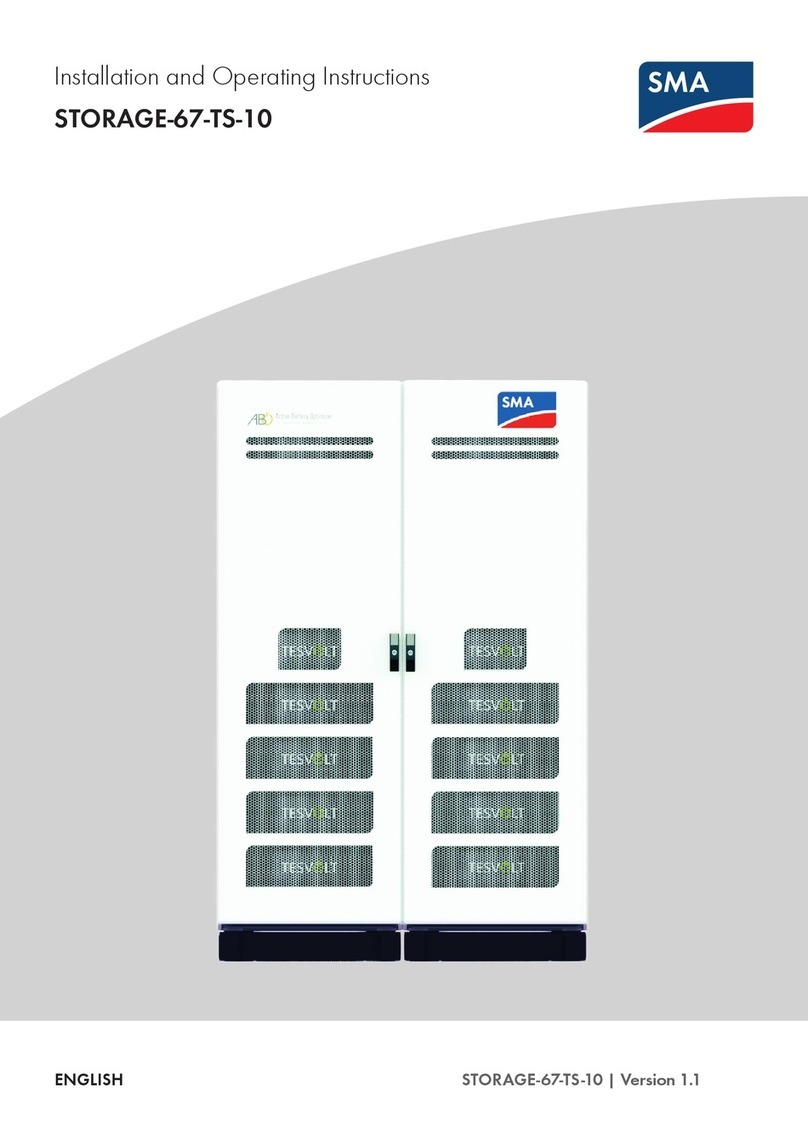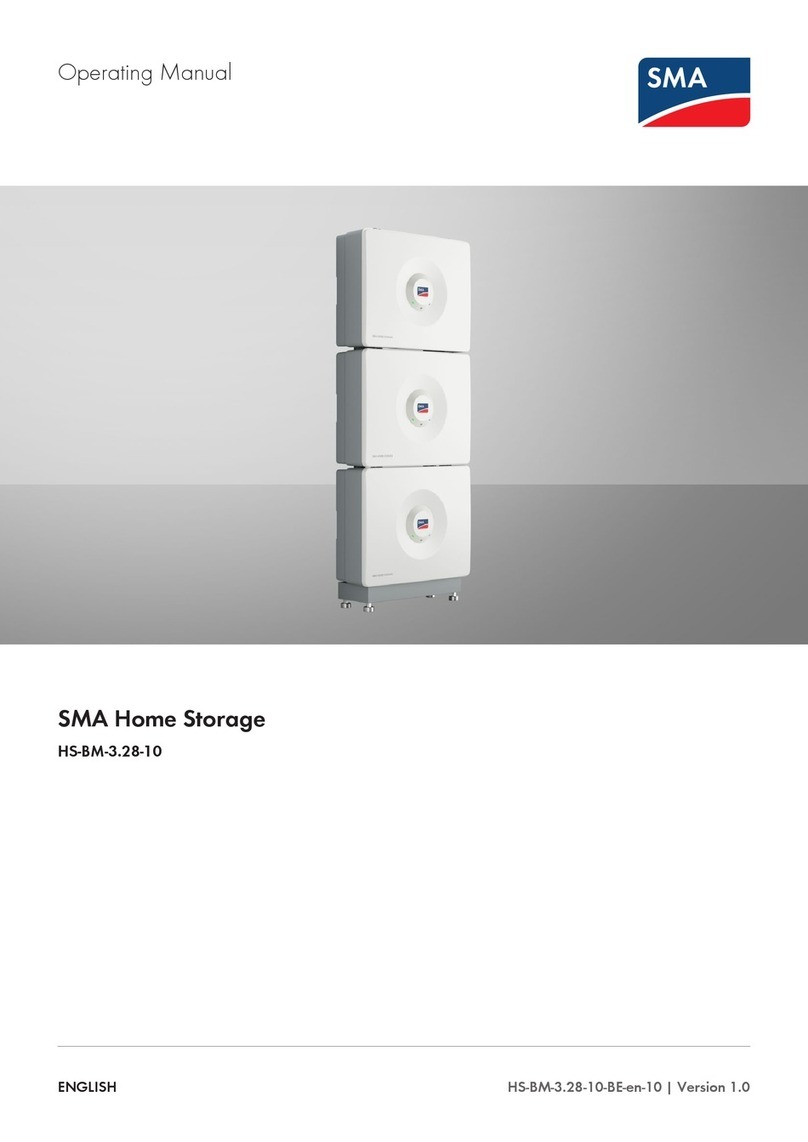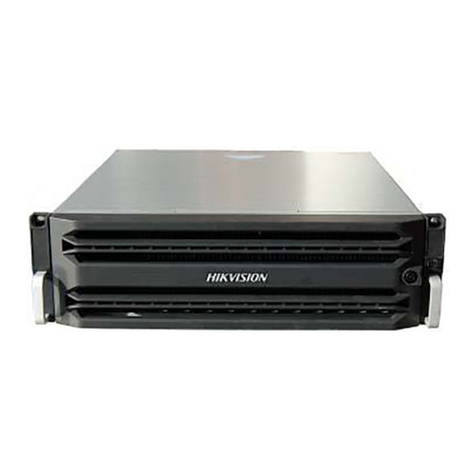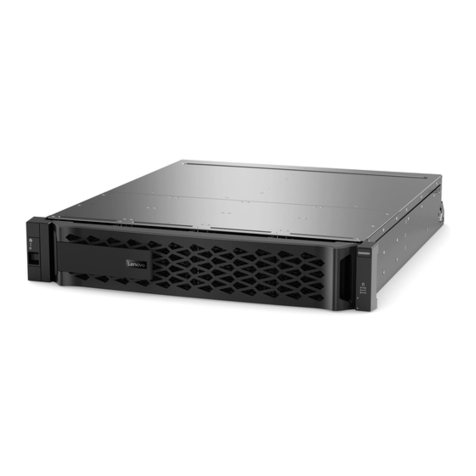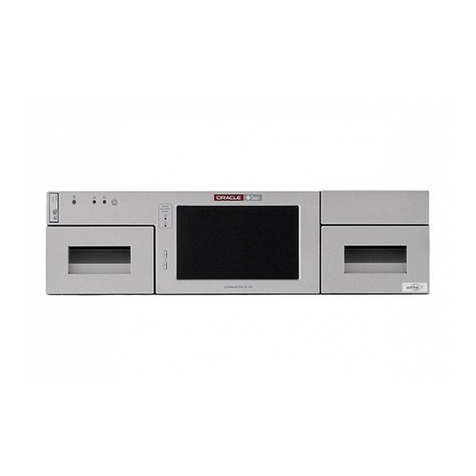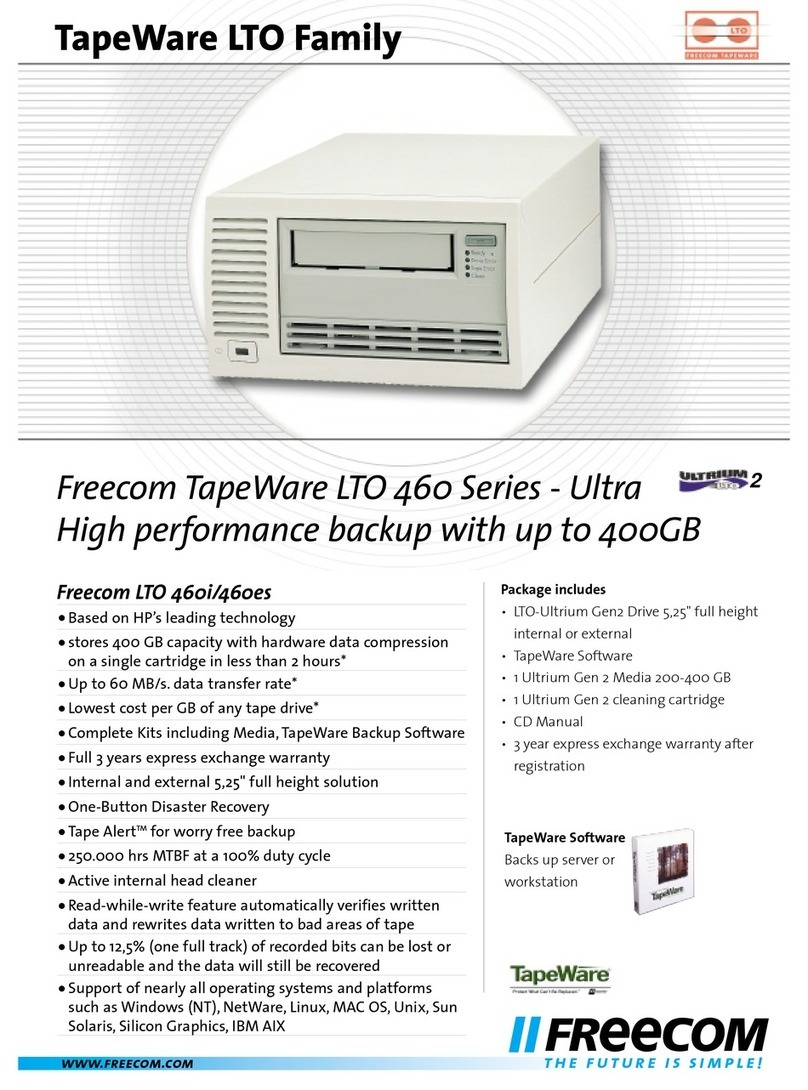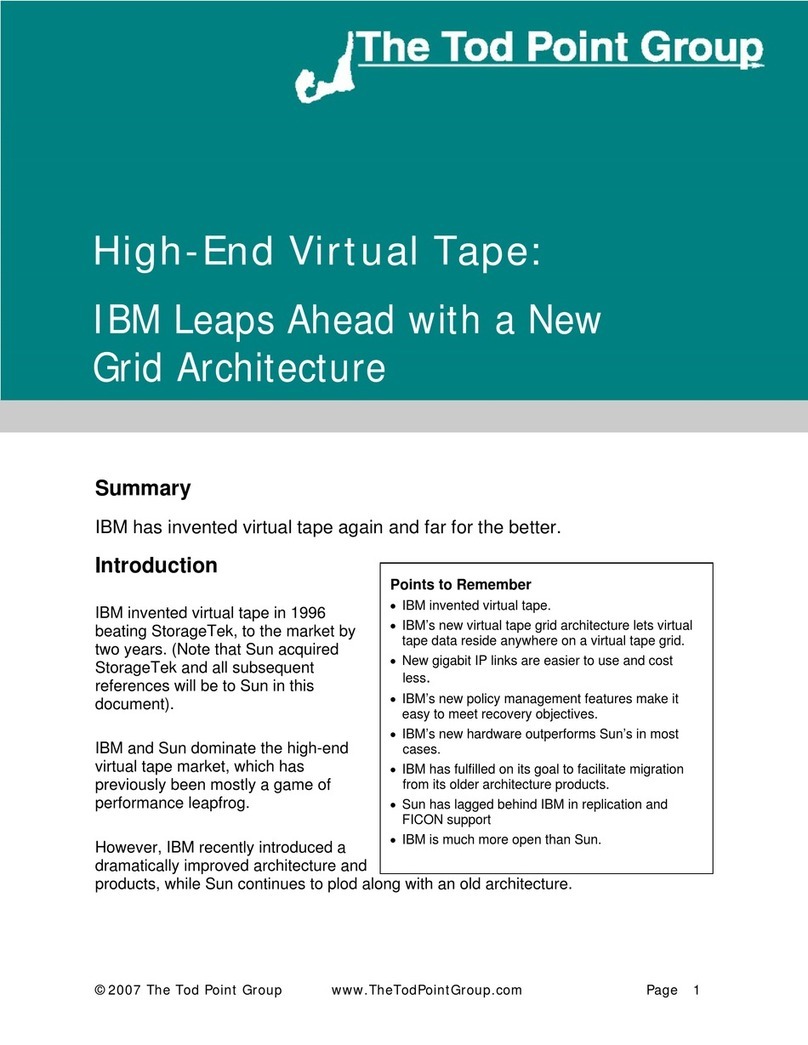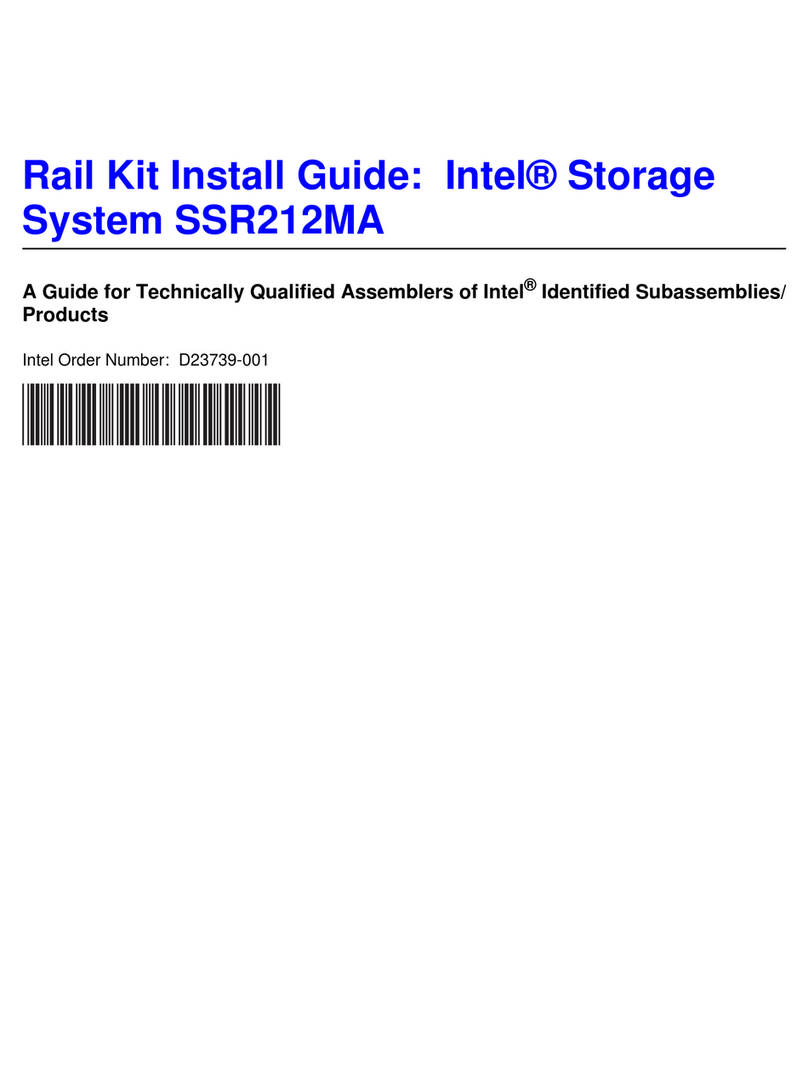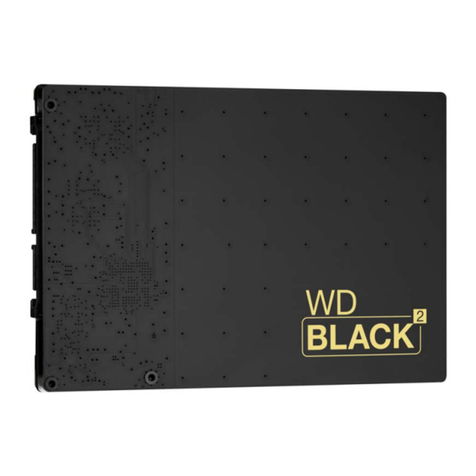SMA SUNNY CENTRAL STORAGE 500 User manual

UTILITY
GRADE
OperatingManual
SUNNY CENTRAL STORAGE
500/630/720/760/800/850/900/1000
SCS-BE-E7-en-12 | 98-118000.02 | Version 1.2ENGLISH

Legal Provisions
The information contained in these documents is property of SMA Solar Technology AG. Any publication, whether in
whole or in part, requires prior written approval by SMA Solar Technology AG. Internal reproduction used solely for
the purpose of product evaluation or other proper use is allowed and does not require prior approval.
SMA Warranty
You can download the current warranty conditions from the Internet at www.SMA-Solar.com.
Software licenses
The licenses for the used software modules can be called up on the user interface of the product.
Trademarks
All trademarks are recognized, even if not explicitly identified as such. Missing designations do not mean that a
product or brand is not a registered trademark.
Modbus® is a registered trademark of SchneiderElectric and is licensed by the ModbusOrganization,Inc.
QRCode is a registered trademark of DENSOWAVEINCORPORATED.
Phillips® and Pozidriv® are registered trademarks of PhillipsScrewCompany.
Torx® is a registered trademark of AcumentGlobalTechnologies,Inc.
SMA Solar Technology AG
Sonnenallee 1
34266 Niestetal
Germany
Tel. +49 561 9522-0
Fax +49 561 9522-100
www.SMA.de
Email: [email protected]
Copyright © 2016 SMA Solar Technology AG. All rights reserved.
Legal Provisions SMA Solar Technology AG
Operating ManualSCS-BE-E7-en-122

Table of Contents
1 Information on this Document ..................................................................................................... 8
1.1 Validity .............................................................................................................................................................. 8
1.2 Target Group .................................................................................................................................................... 8
1.3 Additional Information...................................................................................................................................... 8
1.4 Symbols............................................................................................................................................................. 8
1.5 Typographies.................................................................................................................................................... 9
1.6 Nomenclature................................................................................................................................................... 9
2 Safety............................................................................................................................................. 10
2.1 Intended Use..................................................................................................................................................... 10
2.2 Safety Information ............................................................................................................................................ 11
2.3 Personal Protective Equipment......................................................................................................................... 14
3 Product Overview......................................................................................................................... 15
3.1 System overview............................................................................................................................................... 15
3.2 Design of the Inverter ....................................................................................................................................... 15
3.3 Devices of the Inverter...................................................................................................................................... 16
3.4 Operating and Display Elements..................................................................................................................... 17
3.4.1 Function of the Switches................................................................................................................................... 17
3.4.1.1 Key Switch........................................................................................................................................................ 17
3.4.1.2 AC Disconnection Unit .................................................................................................................................... 17
3.4.1.3 DC Switchgear................................................................................................................................................. 18
3.4.2 Touch Display................................................................................................................................................... 18
3.4.2.1 Design............................................................................................................................................................... 18
3.4.2.2 Explanation of Symbols................................................................................................................................... 19
3.4.3 LEDs of the SC-COM ....................................................................................................................................... 22
3.4.3.1 LEDs on the Enclosure...................................................................................................................................... 22
3.4.3.2 LEDs on the Network Port................................................................................................................................ 23
3.4.3.3 LEDs on the Optical Fiber Terminals............................................................................................................... 24
3.4.4 BSC User Interface........................................................................................................................................... 25
3.4.4.1 Design of the User Interface............................................................................................................................ 25
3.4.4.2 Menu Structure................................................................................................................................................. 26
3.4.5 SC-COM user interface ................................................................................................................................... 27
3.4.5.1 Design of the User Interface............................................................................................................................ 27
3.4.5.2 Tree View and Device View............................................................................................................................ 27
3.4.5.3 Status Symbols................................................................................................................................................. 28
3.5 Symbols on the Product.................................................................................................................................... 28
4 Transport and Mounting .............................................................................................................. 29
4.1 Safety during Transport and Mounting........................................................................................................... 29
4.2 Requirements for Transport and Mounting ..................................................................................................... 29
4.2.1 Requirements and Ambient Conditions........................................................................................................... 29
4.2.2 Center of Gravity Marker on the Inverter....................................................................................................... 29
4.2.3 Preparation for Mounting ................................................................................................................................ 30
4.2.3.1 Drilling Mounting Holes in the Foundation .................................................................................................... 30
4.2.3.2 Preparation for Mounting on a Base.............................................................................................................. 30
4.3 Transporting the Inverter .................................................................................................................................. 31
4.3.1 Transporting the Inverter Using a Pallet Truck ................................................................................................ 31
4.3.2 Transporting the Inverter Using a Forklift or a Crane Fork ............................................................................ 31
4.3.3 Transporting the Inverter Using a Crane......................................................................................................... 32
Table of Contents
SMA Solar Technology AG
Operating Manual 3SCS-BE-E7-en-12

4.4 Mounting of the Inverter................................................................................................................................... 34
4.4.1 Mounting the Inverter on a Foundation.......................................................................................................... 34
4.4.2 Mounting the Inverter on a Base..................................................................................................................... 34
5 Installation..................................................................................................................................... 35
5.1 Safety during Installation ................................................................................................................................. 35
5.2 Preparing the Installation ................................................................................................................................. 36
5.2.1 Replacing the Desiccant Bag in the Inverter................................................................................................... 36
5.2.2 Mounting the Ventilation Plate ........................................................................................................................ 36
5.3 Installing the Grounding................................................................................................................................... 37
5.4 Installing the DC Connection ........................................................................................................................... 38
5.4.1 Requirements for the Cables and Terminal Lugs for the DC Connection...................................................... 38
5.4.2 Connecting the DC Cables.............................................................................................................................. 39
5.5 Installing the AC Connection ........................................................................................................................... 40
5.6 Connecting the Cables for Communication, Control, Supply Voltage and Monitoring .............................. 42
5.6.1 Connecting Optical Fibers with Subscriber Connector.................................................................................. 42
5.6.2 Connecting Optical Fibers via Optical Fiber Pigtail....................................................................................... 44
5.6.3 Connecting the Network Cables..................................................................................................................... 45
5.6.4 Connecting the Cable for the External Fast Stop........................................................................................... 46
5.6.5 Connecting the Cable for Remote Shutdown................................................................................................. 46
5.6.6 Connecting the Cable for the Status Report of the Insulation Monitoring.................................................... 47
5.6.7 Connecting the Cable for the Supply Voltage ............................................................................................... 47
5.6.8 Connecting the Cable for the Status Report of the AC Contactor Monitoring............................................. 48
5.6.9 Connecting the Transformer Protection........................................................................................................... 48
5.6.10 Connecting Digital Inputs and Outputs........................................................................................................... 48
6 Disconnecting and Reconnecting................................................................................................. 50
6.1 Safety When Disconnecting and Reconnecting Voltage Sources................................................................. 50
6.2 Disconnecting the Inverter................................................................................................................................ 51
6.2.1 Disconnecting the DC and AC Side................................................................................................................ 51
6.2.2 Disconnecting the Supply Voltage at the Inverter from Voltage Sources..................................................... 51
6.3 Reconnecting the Inverter................................................................................................................................. 52
6.3.1 Reconnecting the Supply Voltage at the Inverter........................................................................................... 52
6.3.2 Reconnecting the DC and AC Side................................................................................................................. 53
7 Operation...................................................................................................................................... 54
7.1 Safety during Operation.................................................................................................................................. 54
7.2 Information on Settings..................................................................................................................................... 54
7.3 Configuring Network Settings ......................................................................................................................... 56
7.3.1 Information on Integrating the Inverter into a Local Network ....................................................................... 56
7.3.2 Configuring the Network Settings on the Computer...................................................................................... 56
7.3.3 Configuring Network Settings ......................................................................................................................... 56
7.4 Configuring System Settings ............................................................................................................................ 57
7.4.1 Changing the System Settings via the User Interface .................................................................................... 57
7.4.1.1 Setting the Date, Time and Time Zone ........................................................................................................... 57
7.4.1.2 Changing the Password for the User Groups................................................................................................ 57
7.4.1.3 Exporting, Importing and Resetting the Configuration .................................................................................. 58
7.4.1.4 Changing the System Name........................................................................................................................... 58
7.4.2 Changing System Settings via Touch Display ................................................................................................ 59
7.4.2.1 Selecting the Language................................................................................................................................... 59
7.4.2.2 Setting the Date, Time and Time Zone ........................................................................................................... 59
Table of Contents SMA Solar Technology AG
Operating ManualSCS-BE-E7-en-124

7.4.2.3 Selecting the Display Format........................................................................................................................... 59
7.4.2.4 Setting the Brightness....................................................................................................................................... 59
7.5 Parameter Settings............................................................................................................................................ 60
7.5.1 Information on Setting Parameters.................................................................................................................. 60
7.5.2 Setting the Power Control................................................................................................................................ 60
7.5.2.1 Specifying Setpoints ........................................................................................................................................ 60
7.5.2.2 Setting the Frequency-Dependent Active Power Control............................................................................... 61
7.5.2.3 Setting the Grid Voltage-Dependent Reactive Power Control ...................................................................... 62
7.5.3 Setting the Inverter Behavior in the Event of Communication Disturbances ................................................. 63
7.5.4 Setting the Battery Type................................................................................................................................... 64
7.5.5 Setting Inverter Parameters for the Storage System....................................................................................... 65
7.6 Displaying Operating Data via the User Interface......................................................................................... 66
7.7 Changing the Insulation Monitoring................................................................................................................ 66
7.7.1 Insulation Monitoring with GFDI and Insulation Monitoring Device ........................................................... 66
7.7.1.1 Safety with insulation monitoring with GFDI and insulation monitoring device........................................... 66
7.7.1.2 Switching to Insulated Operation ................................................................................................................... 66
7.7.1.3 Switching to Grounded Operation................................................................................................................. 67
7.7.2 Insulation Monitoring with Remote GFDI and Insulation Monitoring Device............................................... 67
7.7.2.1 Information on the Insulation of the Battery with Remote GFDI and Insulation Monitoring Device ........... 67
7.7.2.2 Switching to Insulated Operation ................................................................................................................... 67
7.7.2.3 Switching to Grounded Operation................................................................................................................. 68
8 Troubleshooting ............................................................................................................................ 69
8.1 Safety during Troubleshooting......................................................................................................................... 69
8.2 Reading Off Disturbance Messages ............................................................................................................... 69
8.2.1 Reading Off Error Messages via Touch Display............................................................................................ 69
8.2.2 Reading Off Disturbance Messages via the User Interface .......................................................................... 69
8.3 Acknowledging Disturbance Messages.......................................................................................................... 69
8.3.1 Acknowledging Disturbance Messages via the Key Switch.......................................................................... 69
8.3.2 Acknowledging Disturbance Messages via the User Interface..................................................................... 69
8.4 Remedial Action in Case of Disturbances....................................................................................................... 70
8.4.1 Inverter Behavior in Case of Disturbances...................................................................................................... 70
8.4.2 Explanation of the Error Tables....................................................................................................................... 72
8.4.3 Error Numbers 01xx to 13xx - Disturbance on the Utility Grid .................................................................... 72
8.4.4 Error Numbers 34xx to 40xx ‒ Disturbance at the DC Connection............................................................ 73
8.4.5 Error Numbers 6xxx to 9xxx - Disturbance on the Inverter........................................................................... 74
8.4.6 Error Numbers 1xxxx ‒ Disturbance on the Battery and Storage System................................................... 78
9 Maintenance ................................................................................................................................. 82
9.1 Safety during Maintenance ............................................................................................................................. 82
9.2 Maintenance Schedule and Consumables..................................................................................................... 83
9.2.1 Notes on Maintenance Work ......................................................................................................................... 83
9.2.2 Maintenance Work Every 24 Months............................................................................................................ 84
9.3 Repair Schedule and Spare Parts.................................................................................................................... 85
9.3.1 Information on Repair Work............................................................................................................................ 85
9.3.2 Demand-Based Annual Repairs....................................................................................................................... 85
9.3.3 Repairs every 10 Years ................................................................................................................................... 85
9.3.4 Repairs every 13 Years ................................................................................................................................... 85
9.4 Maintenance Work .......................................................................................................................................... 86
9.4.1 Performing the Visual Inspection ..................................................................................................................... 86
9.4.2 Cleaning the Interior ........................................................................................................................................ 86
9.4.3 Checking the Seals........................................................................................................................................... 86
Table of Contents
SMA Solar Technology AG
Operating Manual 5SCS-BE-E7-en-12

9.4.4 Checking the Latches, Door Stops and Hinges.............................................................................................. 87
9.4.5 Checking the Inverter Surface ......................................................................................................................... 88
9.4.6 Cleaning the Air Duct and Ventilation Grids.................................................................................................. 89
9.4.7 Cleaning the Ventilation Plate ......................................................................................................................... 89
9.4.8 Checking the Bolted Connections of the Power Cabling............................................................................... 90
9.4.9 Checking the Labels......................................................................................................................................... 91
9.4.10 Inverter with Low-Temperature Option: Cleaning the Heating Elements ...................................................... 93
9.4.11 Inverter with Low-Temperature Option: Checking the Heating Elements...................................................... 94
9.4.12 Checking the Fans............................................................................................................................................ 95
9.4.13 Checking the Heating Elements and Hygrostat.............................................................................................. 96
9.4.14 Checking the Function of the UPS................................................................................................................... 97
9.4.15 Checking the AC Disconnection Unit.............................................................................................................. 98
9.4.16 Checking the DC switchgear........................................................................................................................... 99
9.5 Repair Work .....................................................................................................................................................100
9.5.1 Reading off the Replacement Interval Meter..................................................................................................100
10 Disposal .........................................................................................................................................101
11 Periodic Actions.............................................................................................................................102
11.1 Inserting the Cables..........................................................................................................................................102
11.2 Mounting and Disassembly Work...................................................................................................................102
11.2.1 Disassembling and Mounting the Panels........................................................................................................102
11.2.2 Disassembling and Mounting the Protective Covers......................................................................................103
11.2.3 Disassembling and Mounting the Ventilation Grids.......................................................................................104
11.3 Bolted Connections ..........................................................................................................................................106
11.3.1 Preparing the Grounding and DC Cables for Connection............................................................................106
11.3.2 Preparing the AC Connection .........................................................................................................................110
11.4 Clamp Connections..........................................................................................................................................111
11.4.1 Connecting the Cable to the Spring-Cage Terminals.....................................................................................111
11.4.2 Connecting the Cable Shield Using a Shield Clamping Saddle...................................................................113
11.5 Entering the Password via the Touch Display .................................................................................................113
11.6 User Interface....................................................................................................................................................113
11.6.1 Logging Into the User Interface .......................................................................................................................113
11.6.2 Logging Out of the User Interface...................................................................................................................114
12 Function Description .....................................................................................................................115
12.1 Operating States ..............................................................................................................................................115
12.1.1 Overview of the Operating States ..................................................................................................................115
12.1.2 Stop...................................................................................................................................................................115
12.1.3 Grid Monitoring ..............................................................................................................................................116
12.1.3.1 Monitoring the Grid Voltage........................................................................................................................... 116
12.1.3.2 Monitoring the Power Frequency ................................................................................................................... 117
12.1.4 Grid Monitoring Time Reached.......................................................................................................................117
12.1.5 Shutdown..........................................................................................................................................................118
12.1.6 Disturbance.......................................................................................................................................................118
12.2 Safety Functions................................................................................................................................................118
12.2.1 Manual Shutdown Functions...........................................................................................................................118
12.2.1.1 External Fast Stop ............................................................................................................................................ 118
12.2.1.2 Remote Shutdown............................................................................................................................................ 118
12.2.2 Automatic Shutdown Functions .......................................................................................................................119
12.2.2.1 Grid Management Shutdown......................................................................................................................... 119
12.2.2.2 Transformer Protection..................................................................................................................................... 119
Table of Contents SMA Solar Technology AG
Operating ManualSCS-BE-E7-en-126

12.2.2.3 Passive Islanding Detection............................................................................................................................. 119
12.2.2.4 Low-Temperature Option................................................................................................................................. 119
12.2.3 Grounding and Insulation Monitoring............................................................................................................120
12.2.3.1 Mode of Operation......................................................................................................................................... 120
12.2.3.2 GFDI ................................................................................................................................................................. 120
12.2.3.3 Remote GFDI.................................................................................................................................................... 121
12.2.3.4 Insulation Monitoring Device .......................................................................................................................... 122
12.2.3.5 GFDI and Insulation Monitoring Device......................................................................................................... 123
12.2.3.6 Remote GFDI and Insulation Monitoring Device........................................................................................... 124
12.3 Grid Management Services.............................................................................................................................125
12.3.1 Requirements for Grid Management Services ...............................................................................................125
12.3.2 Dynamic Grid Support (FRT) ...........................................................................................................................125
12.3.2.1 Full and Limited Dynamic Grid Support (FRT)................................................................................................ 125
12.3.2.2 Grid Support in Case of Untervoltage (LVRT)................................................................................................ 126
12.3.2.3 Dynamic Undervoltage Detection................................................................................................................... 127
12.3.2.4 Grid Support in the Event of Overvoltage (HVRT)......................................................................................... 128
13 Operating Data and Parameters ................................................................................................130
13.1 BSC Operating Data and Parameters ............................................................................................................130
13.2 SC-COM Operating Data and Parameters....................................................................................................131
14 Technical Data...............................................................................................................................134
14.1 Sunny Central Storage 500.............................................................................................................................134
14.2 Sunny Central Storage 630.............................................................................................................................135
14.3 Sunny Central Storage 720.............................................................................................................................137
14.4 Sunny Central Storage 760.............................................................................................................................138
14.5 Sunny Central Storage 800.............................................................................................................................140
14.6 Sunny Central Storage 850.............................................................................................................................142
14.7 Sunny Central Storage 900.............................................................................................................................143
14.8 Sunny Central Storage 1000..........................................................................................................................145
15 Appendix.......................................................................................................................................147
15.1 Information for Installation ...............................................................................................................................147
15.1.1 Requirements for the Mounting Location ........................................................................................................147
15.1.2 Requirements for the Support Surface ............................................................................................................148
15.1.3 Requirements for the Foundation and Cable Routing....................................................................................149
15.1.4 Requirements for Cable Routing between MV Transformer and Inverter.....................................................150
15.1.5 Dimensions of the Inverter................................................................................................................................151
15.1.6 Minimum Clearances.......................................................................................................................................152
15.1.6.1 Minimum Clearances for Outdoor Installation .............................................................................................. 152
15.1.6.2 Minimum Clearances in Electrical Equipment Rooms.................................................................................... 154
15.1.7 Grounding Concept.........................................................................................................................................156
15.2 Storage..............................................................................................................................................................156
15.3 Torques..............................................................................................................................................................157
15.4 Type Label.........................................................................................................................................................158
15.5 Scope of Delivery .............................................................................................................................................158
15.6 Schematic Diagram..........................................................................................................................................159
15.7 User Groups......................................................................................................................................................159
16 Contact...........................................................................................................................................160
Table of Contents
SMA Solar Technology AG
Operating Manual 7SCS-BE-E7-en-12

1 Information on this Document
1.1 Validity
This document is valid for the following device types from production version E7:
• SCS 500 (SunnyCentralStorage500)
• SCS 630 (SunnyCentralStorage630)
• SCS 720 (SunnyCentralStorage720)
• SCS 760 (SunnyCentralStorage760)
• SCS 800 (SunnyCentralStorage800)
• SCS 850 (SunnyCentralStorage850)
• SCS 900 (SunnyCentralStorage900)
• SCS 1000 (Sunny Central Storage 1000)
This document is valid for the following firmware versions:
• from OCU firmware version: 06.00.00.R
• from DSP firmware version: 06.00.00.R
• from BSC firmware version: 01.02.00.R
• from SC-COM firmware version: 2.32.00.R
The production version of the inverter is indicated on the type label.
The firmware version can be read off from the user interface.
Illustrations in this document are reduced to the essential and may deviate from the real product.
1.2 Target Group
The tasks described in this document must only be performed by qualified persons. Qualified persons must have the
following skills:
• Knowledge of how the product works and is operated
• Knowledge of how batteries work and are operated
• Training in how to deal with the dangers and risks associated with installing and using electrical devices and
installations
• Training in the installation and commissioning of electrical devices and installations
• Knowledge of all applicable standards and directives
• Knowledge of and adherence to this manual and all safety information
1.3 Additional Information
Links to additional information can be found at www.SMA-Solar.com.
1.4 Symbols
Symbol Explanation
Indicates a hazardous situation which, if not avoided, will result in death or serious injury
Indicates a hazardous situation which, if not avoided, can result in death or serious injury
Indicates a hazardous situation which, if not avoided, can result in minor or moderate injury
1 Information on this Document SMA Solar Technology AG
Operating ManualSCS-BE-E7-en-128

Symbol Explanation
Indicates a situation which, if not avoided, can result in property damage
Information that is important for a specific topic or goal, but is not safety-relevant
Indicates a requirement for meeting a specific goal
Desired result
A problem that might occur
1.5 Typographies
Typographies Use Example
bold • Display messages
• Elements on a user interface
• Terminals
• Slots
• Elements to be selected
• Elements to be entered
• Set parameter WGra to 0.2.
>• Connects several elements to be
selected
• Select PV system > Detect.
[Button/Key]• Button or key to be selected or
pressed
• Select [Start detection].
1.6 Nomenclature
Complete designation Designation in this document
SunnyCentralStorage Inverter
BatterySystemController BSC or communication unit
BatteryManagementSystem BMS
Fuel Save Controller FSC
Medium-voltage transformer MV transformer
SunnyCentralCommunicationController SC-COM or communication unit
Storage System Controller SSC
1 Information on this Document
SMA Solar Technology AG
Operating Manual 9SCS-BE-E7-en-12

2 Safety
2.1 Intended Use
The SunnyCentralStorage is a battery inverter that converts the direct current supplied by a battery into grid-compliant
alternating current. An external MVtransformer fitted downstream feeds the alternating current into the utility grid. The
SunnyCentralStorage can be used in off-grid systems based on diesel generators (gensets) as well as in utility grids
for the provision of grid services.
The product is suitable for indoor and outdoor use.
The enclosure complies with degree of protection IP54. The inverter is classified under Class4C2 as per
EN60721-3-4 and is suitable for operation in a chemically active environment.
The SunnyCentralStorage must only be operated in connection wit a battery approved by
SMASolarTechnologyAG. The entire battery voltage range must be completely within the permissible DC input
voltage range of the SunnyCentralStorage. The maximum permissible DC input voltage of the SunnyCentralStorage
must not be exceeded.
If the battery has no fuse switch-disconnector or circuit breaker, a fuse switch-disconnector or circuit breaker must be
installed between the battery and the inverter which is able to securely switch off the short-circuit current of the battery
under fault conditions.
The inverter must only be operated in conjunction with a suitable MV transformer. The MV transformer must be
designed for voltages that arise during pulsed mode of the inverter. The maximum AC voltages to ground are as
follows:
• For the SunnyCentralStorage 500/ 630/ 720/ 760/ 800, the maximum voltage to ground is: ±1450V.
• For the SunnyCentralStorage 850 / 900 / 1000, the maximum voltage to ground is: ±1600V.
Do not deactivate or modify settings that affect grid management services without first obtaining approval from the grid
operator.
The type label must remain permanently attached to the product.
Use this product only in accordance with the information provided in the enclosed documentation and with the locally
applicable standards and directives. Any other application may cause personal injury or property damage.
Alterations to the product, e.g. changes or modifications, are only permitted with the express written permission of
SMA Solar Technology AG. Unauthorized alterations will void guarantee and warranty claims and in most cases
terminate the operating license. SMA Solar Technology AG shall not be held liable for any damage caused by such
changes.
Any use of the product other than that described in the Intended Use section does not qualify as appropriate.
The enclosed documentation is an integral part of this product. Keep the documentation in a convenient place for
future reference and observe all instructions contained therein.
2 Safety SMA Solar Technology AG
Operating ManualSCS-BE-E7-en-1210

2.2 Safety Information
This section contains safety information that must be observed at all times when working on or with the product. To
prevent personal injury or property damage and to ensure long-term operation of the product, read this section
carefully and observe all safety information at all times.
Danger to life from electric shock due to live voltage
High voltages are present in the live components of the product. Touching live components results in death or serious
injury due to electric shock.
• Wear suitable personal protective equipment for all work on the product.
• Do not touch any live components.
• Observe all warning messages on the product and in the documentation.
• Observe all safety information of the battery manufacturer.
• Before any work is performed, always disconnect the following devices externally:
– Grid voltage for grid feed-in
– Internal power supply
– DC voltage of the battery
– Additional external voltages, e.g. control signals from a control room
• Ensure that no disconnected devices can be reconnected.
• After switching off the inverter, wait at least 15minutes before opening it to allow the capacitors to discharge
completely.
• Before working on the inverter, make sure that all devices are completely voltage-free.
• Cover or isolate any adjacent live components.
Danger to life from electric shock due to live DC cables
DC cables connected to a battery are live. Touching live cables results in death or serious injury due to electric
shock.
• Prior to connecting the DC cables, ensure that the DC cables are voltage-free.
• Wear suitable personal protective equipment for all work on the product.
Danger to life due to high short-circuit current in the battery
Despite careful construction, a short circuit may occur in the inverter under fault conditions. In case of a short circuit in
the inverter, the connected battery can supply a very high short-circuit current. The resulting electric arc and pressure
wave lead to death or serious injuries.
• Install the inverter in a closed electrical operating area.
• Always close and lock the inverter.
• Before entering the operating area, externally disconnect the inverter on the AC and DC side.
• Only open the inverter when it is completely disconnected and the capacitors are fully discharged.
2 Safety
SMA Solar Technology AG
Operating Manual 11SCS-BE-E7-en-12

Danger to life from electric shock due to ground fault
If there is a ground fault, system components that are supposedly grounded may in fact be live. Touching incorrectly
grounded components results in death or serious injuries from electric shock.
• Before working on the system, ensure that no ground fault is present.
• Wear suitable personal protective equipment for all work on the product.
Danger to life from electric shock due to damaged product
Operating a damaged product can lead to hazardous situations that result in death or serious injuries due to electric
shock.
• Only operate the product when it is in a flawless technical condition and safe to operate.
• Check the product regularly for visible damage.
• Make sure that all external safety equipment is freely accessible at all times.
• Make sure that all safety equipment is in good working order.
• Wear suitable personal protective equipment for all work on the product.
Danger to life from electric shock even if the inverter is disconnected on the AC and DC sides
The precharge unit will carry live voltage even if the AC disconnection unit and the DC switchgear are open.
Touching live components results in death or serious injury due to electric shock.
• Do not touch any live components.
• Switch off the inverter.
• After switching off the inverter, wait at least 15minutes before opening it to allow the capacitors to discharge
completely.
• Ensure that no voltage is present.
• Do not remove protective covers.
• Observe the warning messages.
• Wear suitable personal protective equipment for all work on the product.
Danger to life from electric shock when entering the storage system
Damaged insulation in the storage system can cause lethal ground currents. Lethal electric shocks can result.
• Ensure that the insulation resistance of the storage system exceeds the minimum value. The minimum value of the
insulation resistance is: 14 kΩ.
• Before entering the storage system, switch the system with the ground fault detection system (GFDI or
RemoteGFDI) to insulated operation.
• The inverter must be installed in a closed electrical operating area.
2 Safety SMA Solar Technology AG
Operating ManualSCS-BE-E7-en-1212

Danger to life from electric shock if the product is not locked
If the product is not locked, unauthorized persons will have access to live components carrying lethal voltages.
Touching live components can result in death or serious injury due to electric shock.
• Always close and lock the product.
• Remove the keys.
• Store the keys in a safe place.
• Ensure that no unauthorized persons have access to the closed electrical operating area.
Danger to life due to blocked escape routes
In hazardous situations, blocked escape routes can lead to death or serious injury. Opening the doors of two
products located opposite each other can block the escape route. It is imperative that the escape route is freely
accessible at all times.
• An escape route must be available at all times. Make sure the minimum passage width of the escape route
meets local standards.
• Do not place any objects in the escape route area.
• Remove all tripping hazards from escape routes.
Risk of fire due to failure to observe torque specifications on live bolted connections
Failure to follow the specified torques reduces the ampacity of live bolted connections so that the contact resistances
increase. This can cause components to overheat and catch fire.
• Ensure that live bolted connections are always tightened with the exact torque specified in this document.
• When working on the device, use suitable tools only.
• Avoid repeated tightening of live bolted connections as this may result in inadmissibly high torques.
Risk of burns due to hot components
Some components of the product can get very hot during operation. Touching these components can cause burns.
• Observe the warnings on all components.
• During operation, do not touch any components marked with such warnings.
• After switching off the product, wait until any hot components have cooled down sufficiently.
• Wear suitable personal protective equipment for all work on the product.
2 Safety
SMA Solar Technology AG
Operating Manual 13SCS-BE-E7-en-12

Property damage due to dust intrusion and moisture penetration
Dust or moisture intrusion can damage the product and impair its functionality.
• Do not open the enclosure during rainfall or when humidity exceeds the specified thresholds. The humidity
thresholds are: 15% to 95%.
• Only perform maintenance work when the environment is dry and free of dust.
• Operation of the product is only permitted when it is closed.
• Connect the external supply voltage after mounting and installing the product.
• If the installation or commissioning process is interrupted, mount all panels.
• Close and lock the enclosure.
• The product must always be closed for storage.
• Store the product in a dry and covered location.
• Temperature at the storage location must be in the specified range. The temperature range is: −25°Cto+70°C
.
Damage to electronic components due to electrostatic discharge
Electrostatic discharge can damage or destroy electronic components.
• Observe the ESD safety regulations when working on the product.
• Wear suitable personal protective equipment for all work on the product.
• Discharge electrostatic charge by touching grounded enclosure parts or other grounded elements. Only then is
it safe to touch electronic components.
2.3 Personal Protective Equipment
Always wear suitable protective equipment
When working on the product, always wear the appropriate personal protective equipment for the specific job.
The following personal protective equipment is regarded to be the minimum requirement:
☐ In a dry environment, safety shoes of categoryS3 with perforation-proof soles and steel toe caps
☐ During precipitation or on moist ground, safety boots of categoryS5 with perforation-proof soles and steel toe
caps
☐ Tight-fitting work clothes made of 100%cotton
☐ Suitable work pants
☐ Individually fitted hearing protection
☐ Safety gloves
Any other prescribed protective equipment must also be used.
2 Safety SMA Solar Technology AG
Operating ManualSCS-BE-E7-en-1214

3 Product Overview
3.1 System overview
The SunnyCentralStorage is a battery inverter that converts the direct current supplied by a battery into grid-compliant
alternating current. An external MVtransformer fitted downstream feeds the alternating current into the utility grid. The
SunnyCentralStorage can be used in off-grid systems based on diesel generators (gensets).
3.2 Design of the Inverter
A
C
B
Figure 1: Design of the Inverter
Position Designation
A Inverter cabinet
B Interface cabinet
C Connection area
3 Product Overview
SMA Solar Technology AG
Operating Manual 15SCS-BE-E7-en-12

3.3 Devices of the Inverter
Stop Start
A
B
D E
F
C
G
Figure 2: Devices of the inverter
Position Designation Description
A Touch Display Different kinds of inverter data can be viewed on the touch display.
The touch display is only used to view data. The display screen is ac-
tivated by touching the touch display.
B Service interface The service interface allows access to the user interface.
C Key switch The key switch is used to switch the inverter on and off.
D DC switchgear The DC switchgear disconnects the inverter from the battery.
E BatterySystemCon-
troller
The BatterySystemController is the communication interface of the
inverter to the Battery Management System, the Fuel Save Controller
or the SCADA system.
F AC disconnection unit The AC disconnection unit disconnects the inverter from the MVtrans-
former.
G SC-COM The SC-COM allows for correct communication between the Bat-
terySystemController and the inverter.
3 Product Overview SMA Solar Technology AG
Operating ManualSCS-BE-E7-en-1216

3.4 Operating and Display Elements
3.4.1 Function of the Switches
3.4.1.1 Key Switch
Figure 3: Switch positions of the key switch
Position Designation
ASwitch position Stop
BSwitch position Start
3.4.1.2 AC Disconnection Unit
The AC disconnection unit disconnects the inverter from the MV transformer.
Figure 4: Switch positions of the AC disconnection unit from ABB
Position Designation Explanation
ASwitch position on The AC disconnection unit is closed.
B Central switch position The AC disconnection unit was tripped and is open.
CSwitch position off The AC disconnection unit is open.
3 Product Overview
SMA Solar Technology AG
Operating Manual 17SCS-BE-E7-en-12

3.4.1.3 DC Switchgear
A B
D C
Figure 5: Indicators on the DC load-break switch
Position Designation
A Spring status indicator
B Position indicator
C ON button
D OFF button
3.4.2 Touch Display
3.4.2.1 Design
The touch display is used to display instantaneous values and parameter settings. Tapping the symbols on the touch
display activates the corresponding functions. If the touch display has not been touched for five minutes, the display is
locked and the logged-in user will be logged out. By tapping the characters "S", "M" or "A", you can unlock the display
again.
3 Product Overview SMA Solar Technology AG
Operating ManualSCS-BE-E7-en-1218

The touch display is divided into three areas.
Figure 6: Design of the touch display
Position Designation Explanation
A Status info line Number of the active menu, login status and time
B Information field Area of the main menu
C Navigation line Navigation area
3.4.2.2 Explanation of Symbols
Information field
You can access the following sub-menus and screens from the information field:
Symbol Designation Explanation
DC side Representation of the instantaneous values
• DC power in W
• Insulation resistance in Ω
• DC current in A
• DC voltage in V
Switch on DC or AC side
closed
If you see this symbol between the "DC side" symbol and the "Inverter
data" symbol, the DC switchgear is closed.
If you see this symbol between the symbol "Inverter data" and the symbol
"AC side", the AC disconnection unit is closed.
Switch on DC or AC side
open
If you see this symbol between the "DC side" symbol and the "Inverter
data" symbol, the DC switchgear is open.
If you see this symbol between the symbol "Inverter data" and the symbol
"AC side", the AC disconnection unit is open.
Status of switches on DC or
AC side unknown
If you see this symbol between the "DC side" symbol and the "Inverter
data" symbol, the switch status of the DC switchgear is not known.
If you see this symbol between the symbol "Inverter data" and the symbol
"AC side", the switch status of the AC disconnection unit is unknown.
3 Product Overview
SMA Solar Technology AG
Operating Manual 19SCS-BE-E7-en-12

Symbol Designation Explanation
Inverter data Representation of the following inverter data:
• Device type
• Operating state
• Symbol for utility grid menu
• Symbol for temperature display
• Symbol for fan display
AC side Representation of the following instantaneous values:
• Active power in W
• Reactive power in VAr
• Power frequency in Hz
• AC current in A
• AC voltage in V
grid First menu page:
• Active mode of active power limitation
• Actual active power in kW
Second menu page
• Active mode of reactive power setpoint
• Actual reactive power in VAr
• Actual displacement power factor cos φ
• Actual excitation type of the displacement power factor
Settings Menu
Symbol Designation Explanation
Language selection Select this symbol to open the language selection menu.
Brightness setting Select this symbol to open the brightness setting menu.
Time setting Select this symbol to open the time setting menu.
Format selection Select this symbol to open the format selection menu.
Password entry Select this symbol to open the password entry menu.
Navigation line
Symbol Designation Explanation
Back Select this symbol to go back to the previous page.
3 Product Overview SMA Solar Technology AG
Operating ManualSCS-BE-E7-en-1220
This manual suits for next models
7
Table of contents
Other SMA Storage manuals
Popular Storage manuals by other brands

Raidon
Raidon SafeTANK SL5640-LB2 user guide

Western Digital
Western Digital WDBAAF0010HBK - My Book Essential 1 TB External Hard... user manual
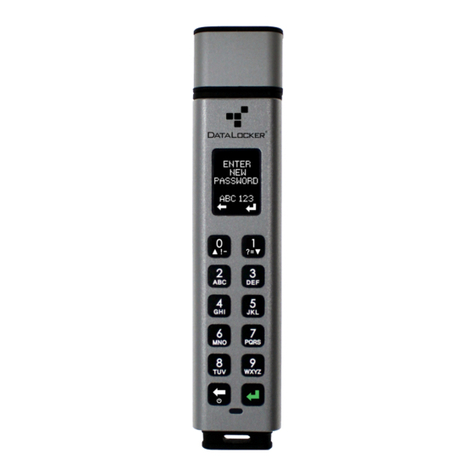
DataLocker
DataLocker Sentry K350 user guide

Panasonic
Panasonic P2HD AJ-HRW10G operating instructions
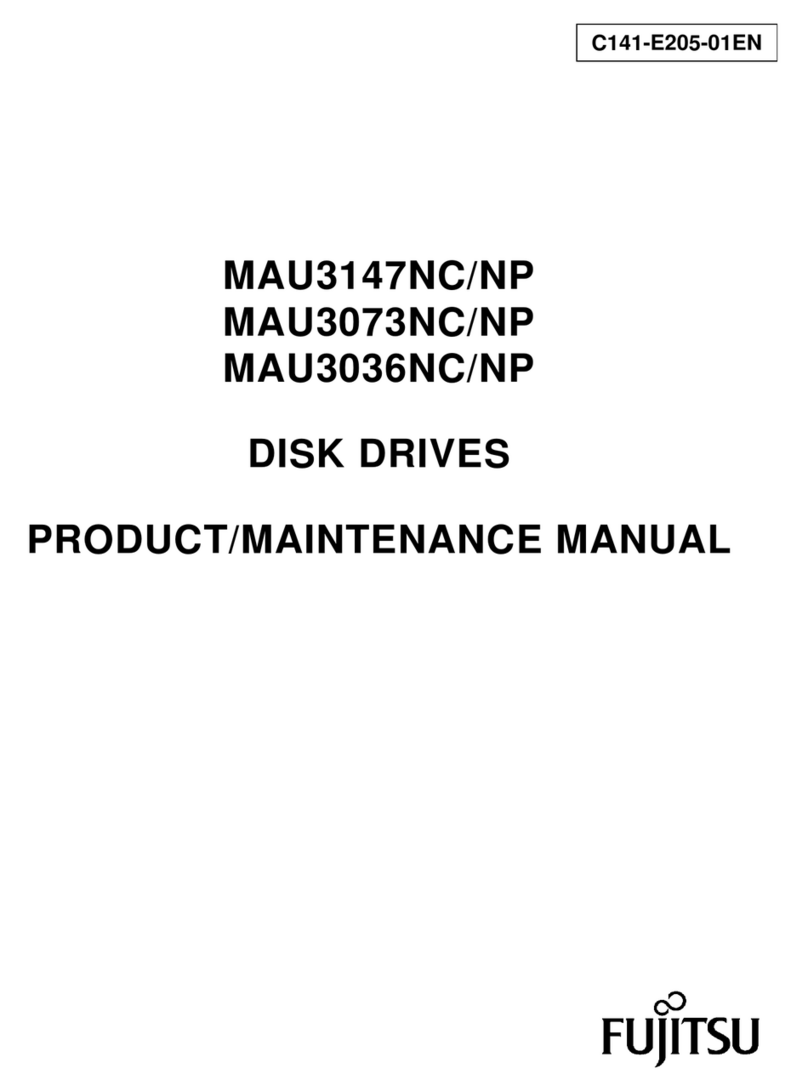
Fujitsu
Fujitsu MAU3036NC/NP Product/maintenance manual

Drazice
Drazice NADO manual

